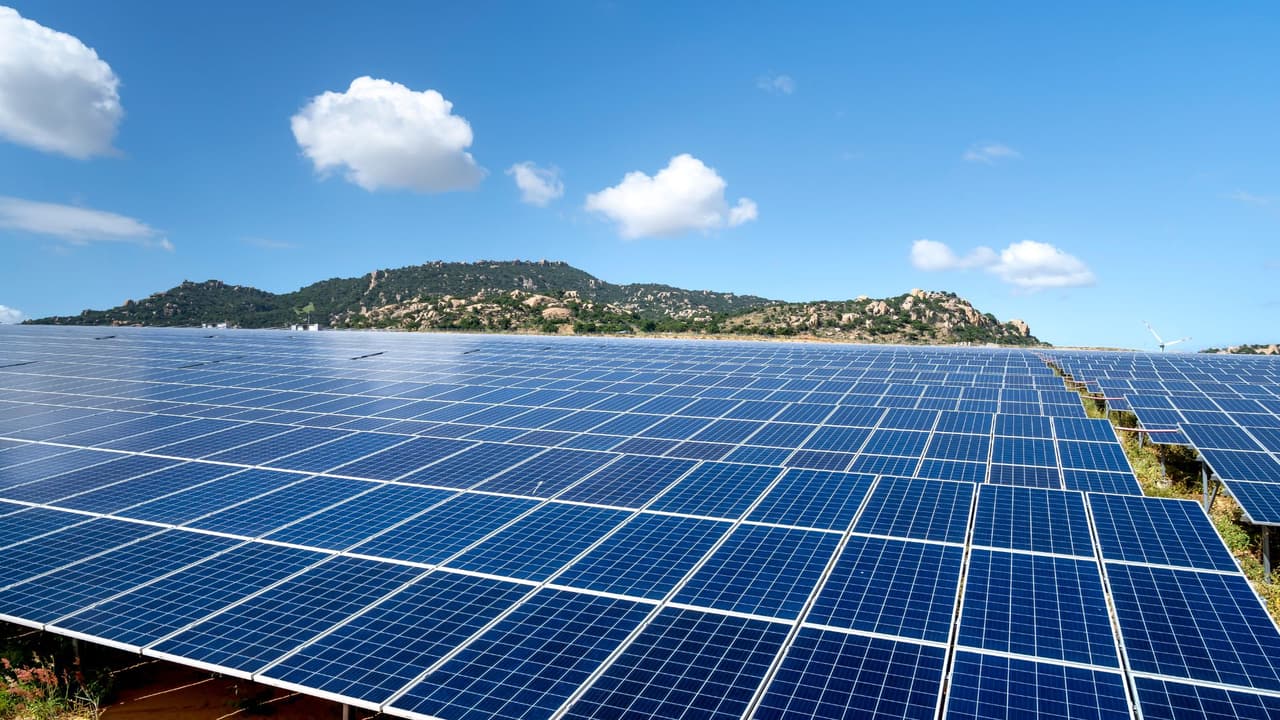India’s push for solar energy to meet its net-zero goals risks land-use conflicts, biodiversity loss, and local livelihood disruption. A just transition framework is needed to ensure renewable growth aligns with ecological and social equity.
By Rajat Kumar

India has a goal to install 500 gigawatts of solar energy capacity by 2030, and therefore, the chances of land use conflict over environmental values are high with increasing demand for land mass to develop large scale solar parks. A precautionary, high-side land use estimate for net-zero in 2050 is between 50,000 and 75,000 km for solar energy. Currently, 74% of solar development in India is built on land cover types that have natural ecosystem preservation or agricultural value.
Loss of forest and agricultural land not only results due to development of large scale solar parks result in the loss of local habitat (pollinators and wildlife) and local livelihoods of farmers and tribal communities, and further exacerbates climate vulnerabilities such as windstorms and flooding.
Thus, it is necessary to take precautionary actions to mitigate this harm. It is critical to consider the risks of our climate mitigation solutions, and analyze the effects on local ecosystems, and economies resulting in social inequalities drawing from the critical paradigms of sustainability.
India’s target for Net Zero and Solar Energy
The Economic Survey of India reveals a 9.6% industrial growth in India, with an average of 5.2% year-on-year growth. With industrial growth, urbanization is rapidly growing with a 1.5% year-on-year increase. With high-speed industrial and urbanization growth, the demand for electricity is growing along with rising GDP per capital.
Globally, India ranks as the third-largest producer and consumer of electricity, continuing to grow over years. However, India is predominantly dependent on coal and other GHG emitting resources (more than 50%) for electricity production, posing a high potential for global warming.
India has an installed power capacity of 446.18 GW, with renewables (including hydro) contributing about 42.34% of the total installed capacity.
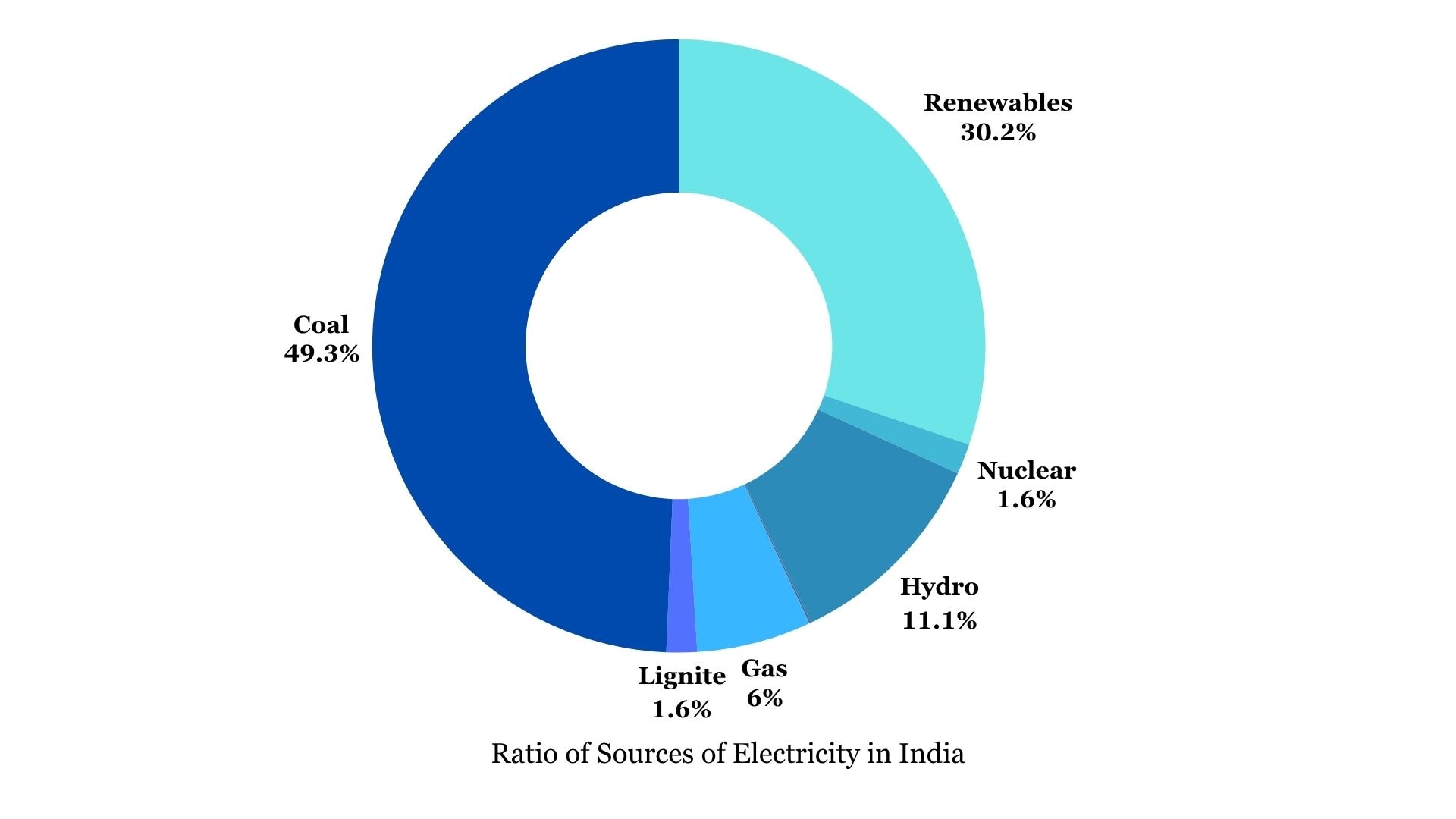
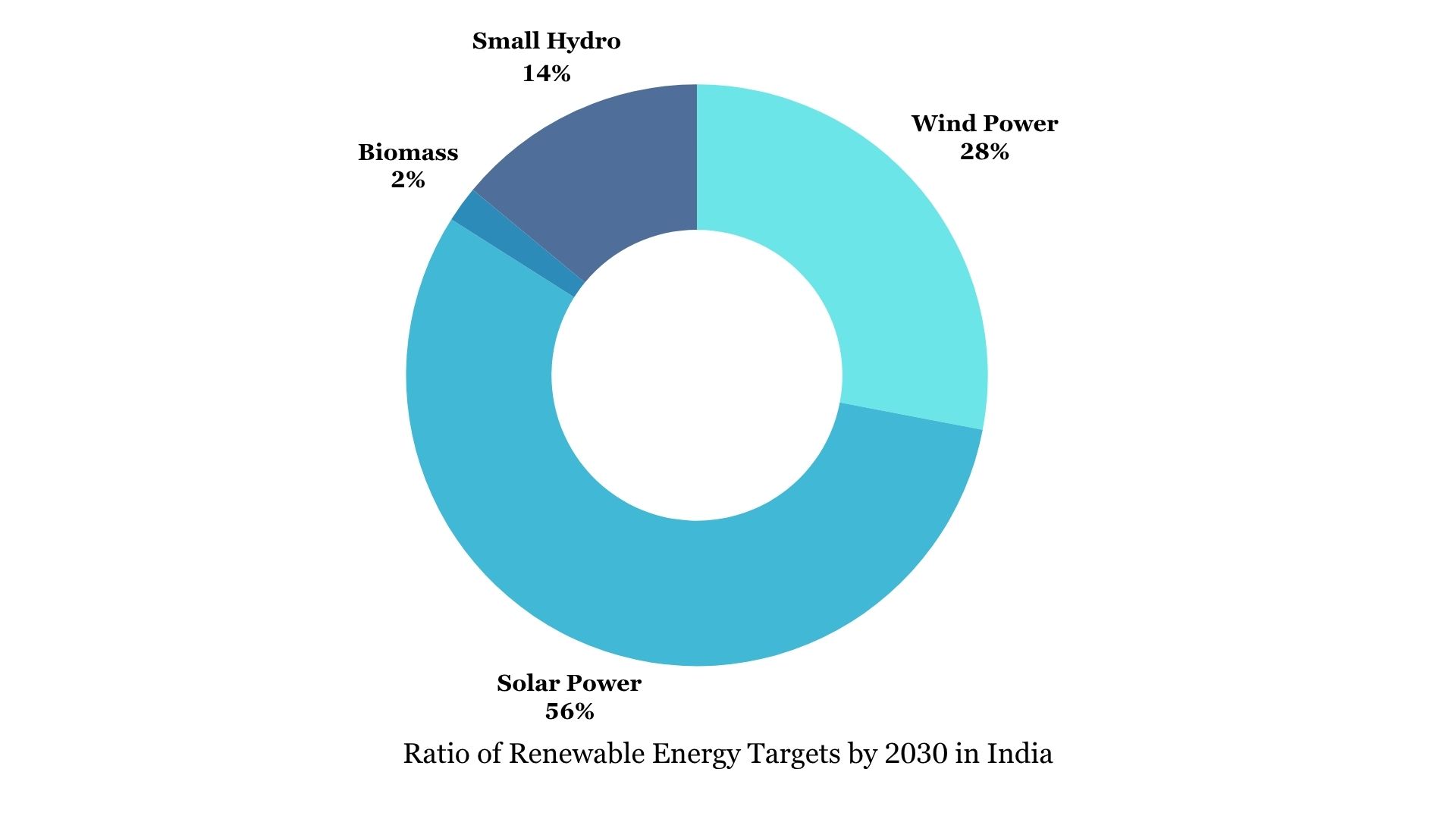
A landscape of Solar Energy in India
India has a target to achieve the remaining 50% of its installed electricity generation capacity from non-fossil fuel sources by 2030. Therefore, a total target of 500 GW of electricity production from renewable energy sources aims to reduce the GHG emissions. India announced its targets at COP 26 in Glasgow for reducing total projected carbon emissions by one billion tons from now to 2030 and achieving the target of net-zero emissions by 2070.
To catalyze the renewable energy production, India is assigning and developing large solar parks with high capacities to produce clean energy. Solar energy has a central role in achieving this plan along with wind, biomass, and hydroelectricity.
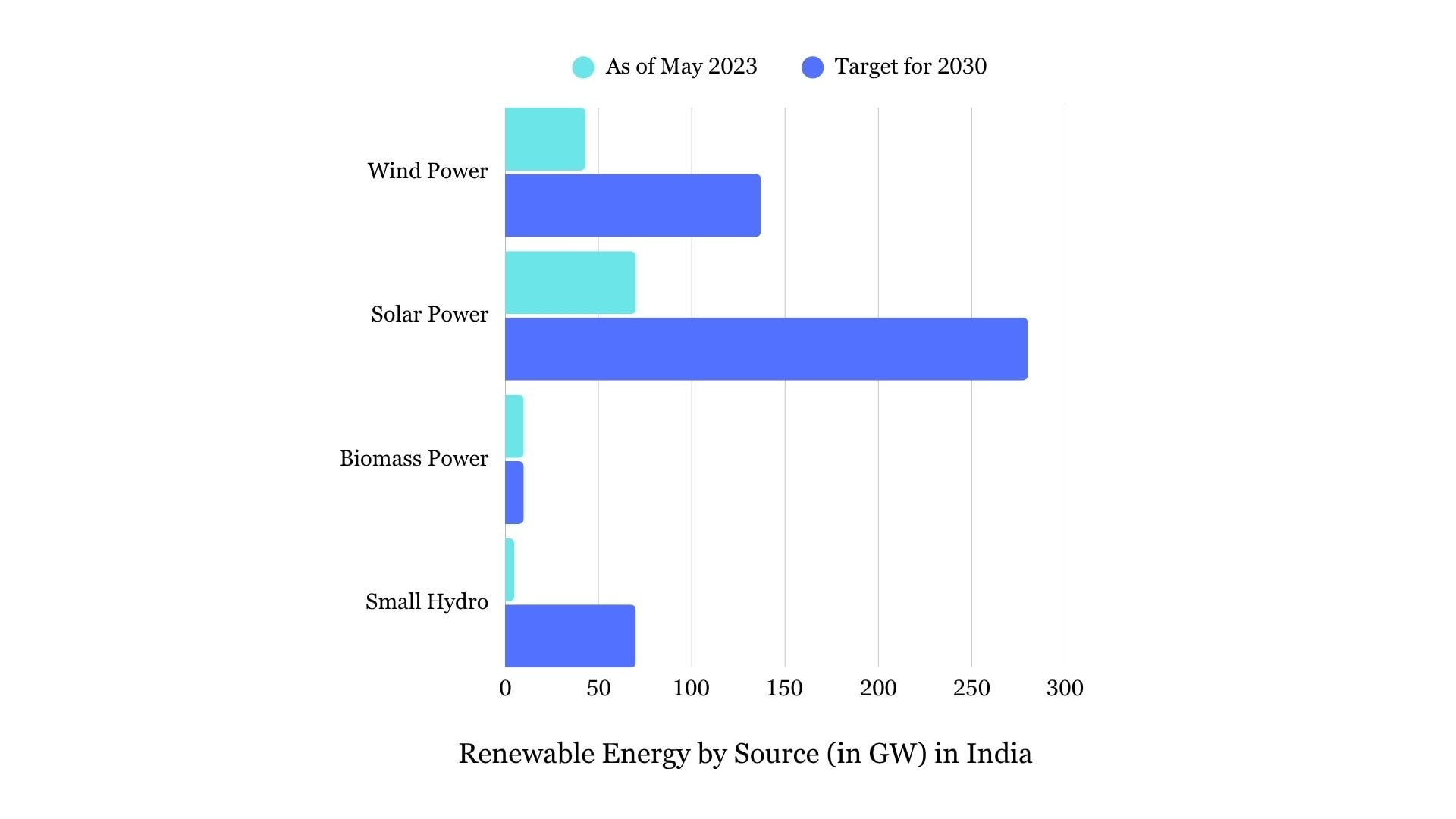
Currently, India’s installed solar power capacity is 85.47 GW. There are 50 solar parks approved with a combined capacity of 37.5 GW. However, the total target is 280 GW and would require another 195 GW capacity of renewable energy.
74% of solar development in India was built on landcover types that have natural ecosystem preservation or agricultural value.

India would need 50,000 to 75,000 square km of land for solar parks to meet net-zero emissions in 2050. Further, India's solar production capacity is estimated at 748 GW, showing a huge potential for expanding solar-based energy.
There will be more large-scale solar parks as reflected in the Jawaharlal Nehru National Solar Mission, an Indian central government policy to promote large-scale solar installations.
Socio-Ecological Systems Mapping and Impacts – A Case of Pavagada Solar Park (PSP)
About Pavagada Solar Park
PSP is developed and implemented by the Karnataka Solar Power Development Corporation Ltd (KSPDCL), a joint venture of Karnataka Renewable Energy Development Ltd (a company of the Government of Karnataka State) and the Solar Energy Corporation of India (a company of the Ministry of New and Renewable Energy, Government of India).
PSP is one of the world’s largest solar parks, with a capacity of 2.05 GW, covering 13,000 acres of land and operational since 2019. The park covers land of 5 villages located on a semi-arid plateau designated as “wasteland,” traditionally used for agricultural and grazing purposes by local communities.
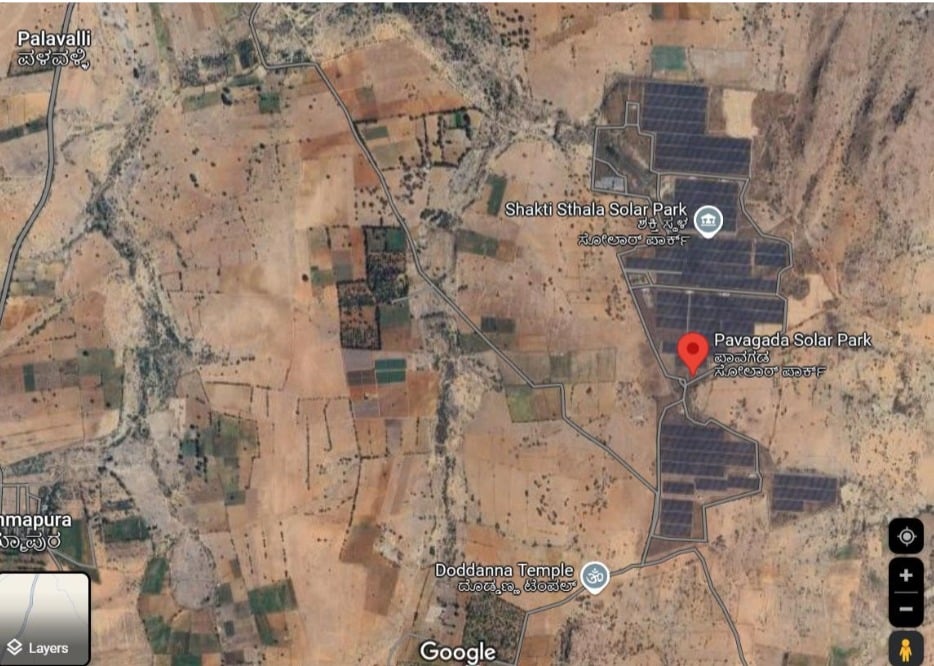
A satellite image of Pavagada Solar Park (Google Maps)
Socio-Ecological Systems Mapping and Impacts of PSP
Socio-Ecological Systems can be defined as “social systems in which some of the interdependent relationships among humans are mediated through interactions with biophysical and non-human biological units”.
The resource system centers on solar renewable energy production, with land leased from five villages earlier used for agriculture and animal grazing and water consumption from borewells. While resource units generated by PSP include a capacity of 2,050 MW of energy, with each square meter of panels producing 5.35 kWh per day while utilizing solar photovoltaic modules and solar panels spread across 13000 acres of land. Farmers receive an annual income for leasing their land.
The governance system includes key stakeholders such as Karnataka Solar Power Development Corporation Ltd (KSPDCL), Karnataka Renewable Energy Development Ltd (KREDL), and the Solar Energy Corporation of India (SECI), who are key governing bodies and implementing national and state level policies like Karnataka Solar Policy 2014-2021, Nava Karnataka Nirmana and National Solar Mission, while also ensuring various rules regulations around land agreements, environmental clearances an water usage. PSP is funded through central, state and various private companies in Public Private Partnership model.
The users of PSP are from two different ends; first, who are benefitted through energy production i.e. electricity grid owners, subcontractors, corporations and households especially in urban areas, while local farmers receiving INR 21,000 INR annually by leasing land.
Farmers and community members who are landowners and who are dependent on the land but not the owner lost their livelihoods was one of the key conflicts. Farmers were promised to give jobs, but didn’t happen on the ground. Pavagada households often face inconsistent and poor power access, albeit their land is used to generate electricity. Social challenges such as increase in alcohol consumption and domestic violence are the trickle-down effects of the loss of livelihoods and unequal growth.
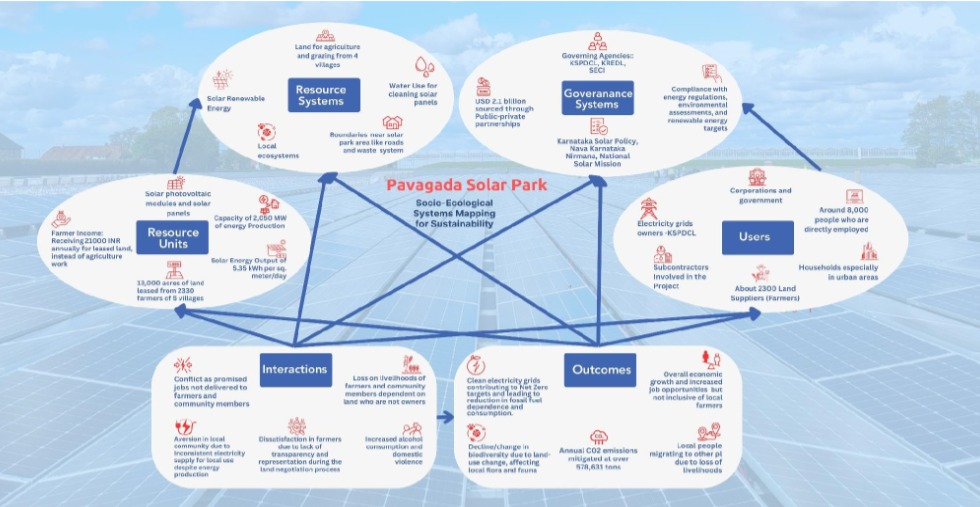
A Socio-Ecological Systems Mapping of Pavagada Solar Park
Based on the SES mapping, the primary connection identified is the change in land use for the PSP development. Findings on PSP in Karnataka highlight how land defined as “wasteland” is leased from local farmers for up to 28 years, removing it from traditional agricultural purposes.
The transition is justified by the potential for renewable energy production and further contributing to the reduction in GHG emissions. The reduction of GHG emissions is one of the key positive outcomes of PSP. However, it has intense impact on local communities including farm owners, agricultural laborers, and women farmers who depend upon these lands for their livelihoods.
The landowners who leased their land for PSP, are primarily dependent on lease payments, have lost access to their land and face increased economic vulnerability. The agricultural laborers, livestock grazers, who do not own the land (are mainly from low socio-economic communities of village social systems), but are dependent on the land pre-PSP development will lose their livelihoods.
Beyond socio-economic impact, research on PSP reveals a decline/change in biodiversity due to land-use change, affecting local flora and fauna. This land use change has cascading effects on local ecosystems, altering species diversity and ecosystem health.
Solar parks are water intensive projects as they need water for panel cleaning and maintenance. Studies on PSP reveals that the water-intensive operations can lower groundwater levels, as Pavagada is already a water scarce area, impacting the surrounding communities and their agricultural potential.
What lies ahead? – A Need for Just Transitions Framework
“We cannot achieve a sustainability transition without justice; indeed, an unjust transition is not sustainable”. Transitioning to renewable energy and net zero target is the need of the hour. It should be done in a way that ensures protection of workers, local communities and ecosystems. Integrating equality and justice in the transition will ensure sustainability in its truest sense.
The case of Pavagada Solar Park emphasizes the need for just transition in the development of solar parks to lower the detrimental impact on local communities. In case of India, energy policies like the National Solar Mission should not come at the expense of local communities’ rights and livelihoods, resources, and environment.
Energy transition policy should mandate environmental impact assessments (EIAs) specifically tailored to understand the land use patterns and its relationship with local ecosystems, biodiversity, water resources and communities, rather than acquiring land through land lease agreements.
The learnings from Agrivoltaic projects are useful as we continue to develop large solar parks. The project is designed to continue agriculture and cattle grazing with elevated solar panels and wider spacing between rows. It also focuses on environmental and cultural diversity by minimizing impacts on wetlands, wildlife and local resources. Also, the decommissioning plan to restore the land after solar project gets over should be considered.
This approach helps farmers and other community members to continue use their land for the traditional livelihoods, while benefitting from solar leases. By adopting models, the large-scale solar projects can balance renewable energy production to mitigate greenhouse gases with social, environmental, and agricultural benefits ensuring just transition and sustainable development.
The energy policy needs to devise evidence-based approach for land cover change analysis and redefine “wasteland” classifications, requiring renewable projects to explore water-efficient technologies to safeguard local water supplies, ensure fair compensation, participatory decision-making, and long-term community support - which are crucial for achieving the Sustainable Development Goals.
Integrating a Just Transition approach into India’s National Solar Mission and into energy policy worldwide across countries who are developing large solar parks, accounting for both social and environmental impacts, ensures balanced economic development with sustainable land use, while reducing greenhouse emissions.
(Rajat has over seven years of experience in Impact Management, Measurement and Reporting. He was a Legislative Assistant to a Member of Parliament Fellow with PRS Legislative Research. Currently, he is pursuing MS Sustainability at Tufts University in Boston and has academic background in Law & Governance and Communication from India.)
